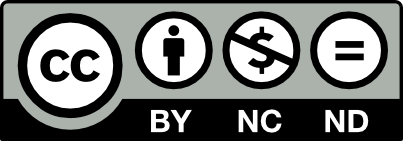Implicit and semi-implicit time discretizations are developed for the Cai–Hu model describing the formation of biological transport networks. The model couples a nonlinear elliptic equation for the pressure with a nonlinear reaction-diffusion equation for the network conductance vector. Numerical challenges include the nonlinearity and the stiffness, thus an explicit discretization puts severe constraints on the time step. We propose an implicit and a semi-implicit discretizations, which decays the energy unconditionally or under a condition independent of the mesh size respectively, as will be proven in 1D and verified numerically in 2D.
Keywords: biological transport networks, gradient flow, numerical schemes
 CC-BY-NC-ND 4.0
CC-BY-NC-ND 4.0
@article{SMAI-JCM_2019__5__229_0,
author = {Di Fang and Shi Jin and Peter Markowich and Beno{\^\i}t Perthame},
title = {Implicit and {Semi-implicit} {Numerical} {Schemes} for the {Gradient} {Flow} of the {Formation} of {Biological} {Transport} {Networks}},
journal = {The SMAI Journal of computational mathematics},
pages = {229--249},
publisher = {Soci\'et\'e de Math\'ematiques Appliqu\'ees et Industrielles},
volume = {5},
year = {2019},
doi = {10.5802/smai-jcm.59},
language = {en},
url = {https://smai-jcm.centre-mersenne.org/articles/10.5802/smai-jcm.59/}
}
TY - JOUR AU - Di Fang AU - Shi Jin AU - Peter Markowich AU - Benoît Perthame TI - Implicit and Semi-implicit Numerical Schemes for the Gradient Flow of the Formation of Biological Transport Networks JO - The SMAI Journal of computational mathematics PY - 2019 SP - 229 EP - 249 VL - 5 PB - Société de Mathématiques Appliquées et Industrielles UR - https://smai-jcm.centre-mersenne.org/articles/10.5802/smai-jcm.59/ DO - 10.5802/smai-jcm.59 LA - en ID - SMAI-JCM_2019__5__229_0 ER -
%0 Journal Article %A Di Fang %A Shi Jin %A Peter Markowich %A Benoît Perthame %T Implicit and Semi-implicit Numerical Schemes for the Gradient Flow of the Formation of Biological Transport Networks %J The SMAI Journal of computational mathematics %D 2019 %P 229-249 %V 5 %I Société de Mathématiques Appliquées et Industrielles %U https://smai-jcm.centre-mersenne.org/articles/10.5802/smai-jcm.59/ %R 10.5802/smai-jcm.59 %G en %F SMAI-JCM_2019__5__229_0
Di Fang; Shi Jin; Peter Markowich; Benoît Perthame. Implicit and Semi-implicit Numerical Schemes for the Gradient Flow of the Formation of Biological Transport Networks. The SMAI Journal of computational mathematics, Volume 5 (2019), pp. 229-249. doi : 10.5802/smai-jcm.59. https://smai-jcm.centre-mersenne.org/articles/10.5802/smai-jcm.59/
[1] Biological transportation networks: modeling and simulation, Anal. Appl. (Singap.), Volume 14 (2016) no. 1, pp. 185-206 | DOI | MR | Zbl
[2] Continuum modeling of biological network formation, Model. Simul. Sci. Eng. Technol., Birkhäuser/Springer (2017), pp. 1-48 | MR
[3] Structure, Scaling, and Phase Transition in the Optimal Transport Network, Phys. Rev. Lett., Volume 98 (2007), 088702 pages | DOI
[4] A mesoscopic model of biological transportation networks (2018) (https://arxiv.org/abs/1806.00120) | Zbl
[5] Elementary numerical analysis: An algorithmic approach, McGraw-Hill Book Co., 1965, x+278 pages | MR | Zbl
[6] Fluctuations and Redundancy in Optimal Transport Networks, Phys. Rev. Lett., Volume 104 (2010), 048703 pages | DOI
[7] A constant production hypothesis guides leaf venation patterning, Proceedings of the National Academy of Sciences, Volume 103 (2006) no. 24, pp. 9363-9368 http://www.pnas.org/content/103/24/9363 | arXiv | DOI
[8] Stability analysis and application of the exponential time differencing schemes, J. Comput. Math., Volume 22 (2004) no. 2, pp. 200-209 (Special issue dedicated to the 70th birthday of Professor Zhong-Ci Shi) | MR | Zbl
[9] Analysis and applications of the exponential time differencing schemes and their contour integration modifications, BIT, Volume 45 (2005) no. 2, pp. 307-328 | DOI | MR | Zbl
[10] Nonlinear stability of the implicit-explicit methods for the Allen-Cahn equation, Inverse Probl. Imaging, Volume 7 (2013) no. 3, pp. 679-695 | DOI | MR
[11] ODE and PDE based modeling of biological transportation networks (2018) (https://arxiv.org/abs/1805.08526) | Zbl
[12] Rigorous Continuum Limit for the Discrete Network Formation Problem (2018) (https://arxiv.org/abs/1808.01526)
[13] Mathematical analysis of a PDE system for biological network formation, Commun. Partial Differ. Equations, Volume 40 (2015) no. 5, pp. 918-956 | DOI | MR | Zbl
[14] Notes on a PDE system for biological network formation, Nonlinear Anal., Theory Methods Appl., Volume 138 (2016), pp. 127-155 | DOI | MR | Zbl
[15] Adaptation and Optimization of Biological Transport Networks, Phys. Rev. Lett., Volume 111 (2013), 138701 pages | DOI
[16] Damage and Fluctuations Induce Loops in Optimal Transport Networks, Phys. Rev. Lett., Volume 104 (2010), 048704 pages | DOI
[17] Endothelial regulation of wall shear stress and blood flow in skeletal muscle microcirculation, Am. J. Physiol. Heart Circ. Physiol., Volume 260 (1991) no. 3, p. H862-H868 (PMID: 2000980) | DOI
[18] The Role of Elastic Stresses on Leaf Venation Morphogenesis, PLoS Comput. Biol., Volume 4 (2008) no. 4, pp. 1-10 | DOI | MR
[19] Role of shear stress and stretch in vascular mechanobiology, J. R. Soc. Interface, Volume 8 (2011) no. 63, pp. 1379-1385 | DOI
[20] The Physiological Principle of Minimum Work: I. The Vascular System and the Cost of Blood Volume, Proc. Natl. Acad. Sci. USA, Volume 12 (1926) no. 3, pp. 207-214 | DOI
[21] Leaf Vascular Pattern Formation., The Plant Cell, Volume 9 (1997) no. 7, pp. 1121-1135 | DOI
[22] Crucial role of endothelium in the vasodilator response to increased flow in vivo., Hypertension, Volume 8 (1986) no. 1, pp. 37-44 | DOI
Cited by Sources:

